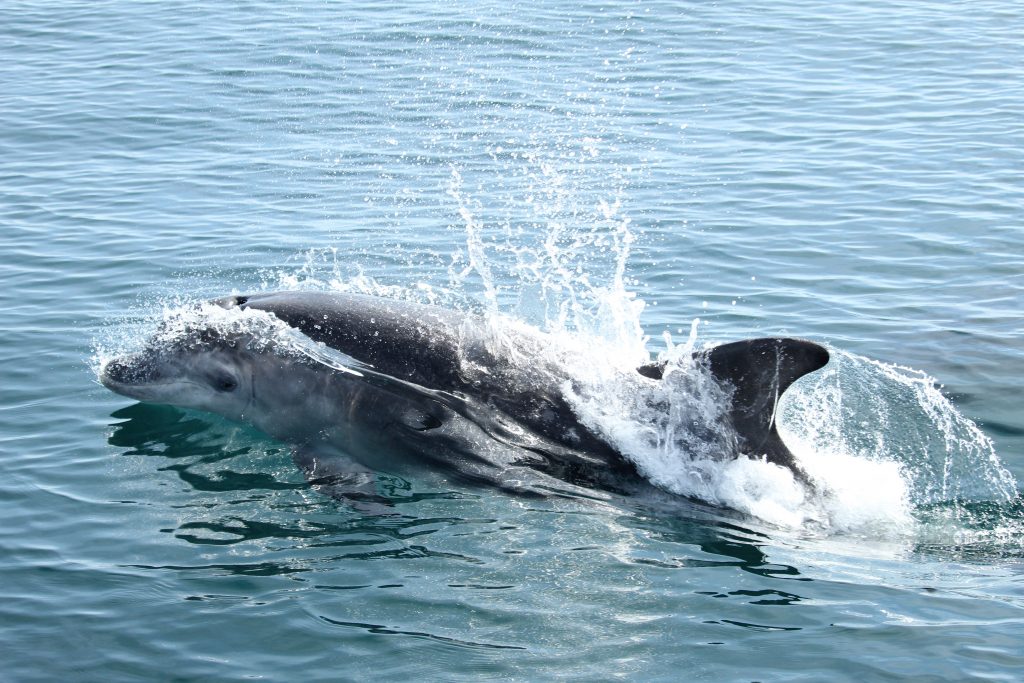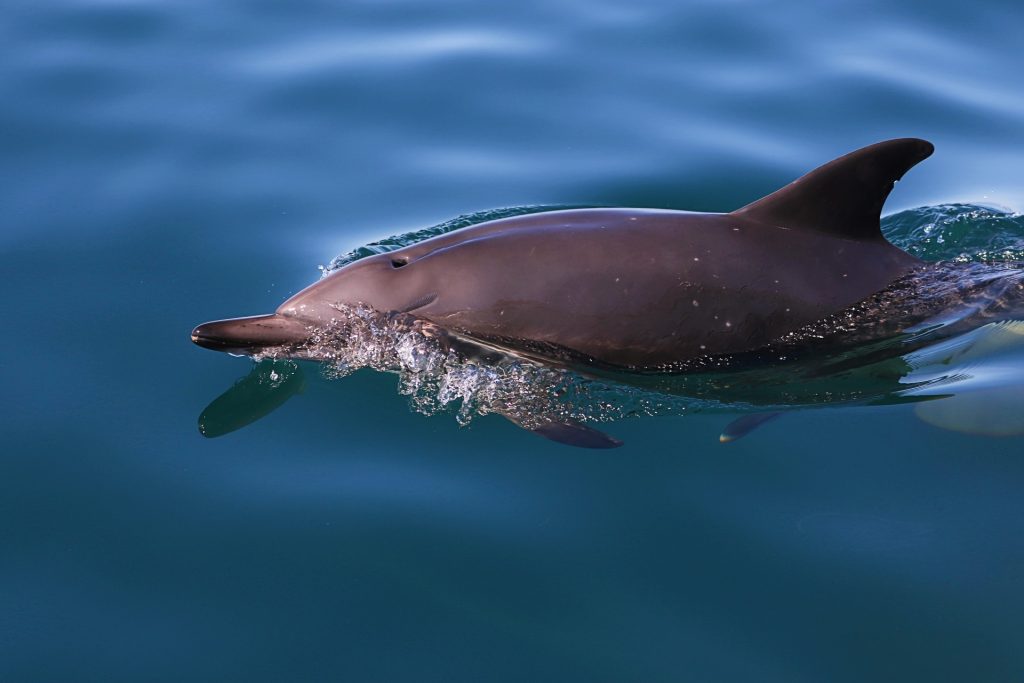Sea Watch Foundation researchers were treated to a very special sighting in the Cardigan Bay Special Area of Conservation yesterday. The survey team encountered two small pods of common dolphins, with one animal displaying an unusual melanistic colouration.
Renowned for its semi-resident population of bottlenose dolphins, Cardigan Bay, is home to the flagship monitoring project that Sea Watch Foundation has been conducting for over two decades. Although focused upon conservation monitoring of the bottlenose dolphin for the statutory body, Natural Resources Wales, other marine mammal species are routinely recorded. Sea Watch also has a UK-wide citizen science observation program with a network of more than 3,000 observers that has been collecting data for half a century, making it one of the largest and longest running monitoring projects of its kind in Europe.

Despite their name, common dolphins are a much rarer visitor to the coast of Cardigan Bay, preferring deeper offshore waters. Quicker and more agile than their larger cousins, these acrobatic animals are known to approach boats to bow ride, surfing the bow wave created by the boat as it is travelling along. This coastal sighting may well be in responses to large shoals of sprat or herring in the area.
“It has been almost a year since I last saw common dolphins off the coast of Galicia, Spain, and what an anniversary!” says our Communication and Outreach Officer, Katie Baker, “They are such an agile and peppy species, and I was so excited that our volunteers were able to observe their behaviour at such close proximity. It was a privilege and the energy on-board the research vessel was electric!”. Katie took this video of the dolphins bow-riding.
The team were thrilled to watch the dolphins jostle for position and leap out of the water in front of the boat. Our encounter got even better when our intern, Celia, spotted that one animal was particularly darker than the other individuals in the pod.
“I was taking photos of the dolphins and I thought there was something wrong with my camera exposure because I couldn’t see the typical hourglass pattern (of a common dolphin)” says Celia, “Then I realised that the specific individual was a lot darker than the others in the pod.”

The atypical dark colouration is a result of melanism – darkening of colouration due to an excess production of a black pigment called melanin. It is observed in a wide variety of species, the most well-known being so called ‘black panthers’, melanistic leopards or jaguars.
Common dolphins typically show a characteristic tan and grey hourglass colouration. While the flanks of this melanistic individual are slightly lighter, the tan colouration around the front of its body is completely missing. The pictures taken of this pod will be added to a catalogue of known common dolphin individuals that the Sea Watch Foundation has been compiling over the years to keep track of their movements using a method called photo-identification. This has shown that some individuals return to the same area year after year having likely spent the winter months in the Bay of Biscay.

“Bottlenose dolphins are our main target species and we have been monitoring their population here in Cardigan Bay for over 20 years,” says Monitoring Officer Katrin Lohrengel,” However, in recent years, we have also started to compile a catalogue of common dolphins – although they are more speedy and more challenging to photograph. It will be interesting to see if we can match any of these particular individuals; this is certainly the first time we’ve seen this melanistic animal!”
“Generally, we use nicks, notches and rake marks on the animals’ dorsal fin to identify them. However, in the case of this one, we can definitely also rely on its unique colouration!”
This sighting highlights the variety of amazing marine wildlife that can be found on the doorstep of UK coastlines. During Sea Watch’s National Whale and Dolphin Watch at the end of last month, around 750 sightings of at least 8 species have been submitted to the charity! You can access all our sightings from the 9-day event here. To get involved, visit the Sea Watch Foundation website or download the Sea Watcher App to record your own sightings!
Katie Baker Communication and Outreach Officer
























